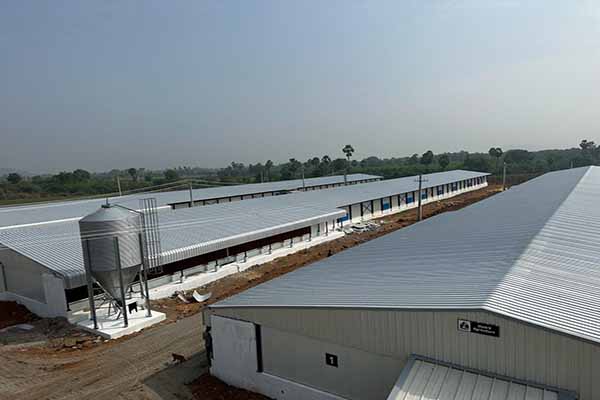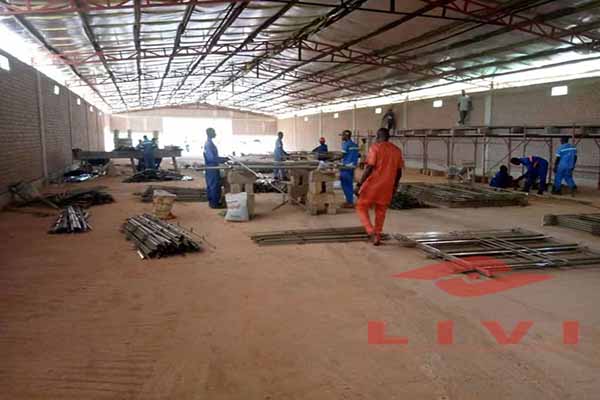How Energy-Saving Effect of Automated Equipment for Chicken Farms in Kenya Enhances Efficiency
Time : 2025-06-30
In the dynamic agricultural landscape of Kenya, the poultry sector has seen significant growth, with chicken farms becoming key contributors to the national economy. As the industry expands, the need for energy-efficient automated equipment becomes increasingly vital. This article delves into the energy-saving effects of automated equipment for chicken farms in Kenya, discussing their impact on efficiency and sustainability.
The Evolution of Chicken Farming in Kenya
Kenya’s poultry sector has evolved from small-scale backyard operations to large-scale commercial farms. This shift has led to a growing demand for technology to enhance productivity and efficiency. Automated equipment plays a crucial role in this transformation, offering solutions that not only increase output but also reduce energy consumption.

Understanding Automated Equipment for Chicken Farms
Automated equipment in chicken farms encompasses a range of technologies, including feeders, waterers, lighting systems, ventilation, and monitoring systems. These devices are designed to optimize farm operations, reduce labor costs, and enhance animal welfare. By automating processes, farms can achieve greater consistency and efficiency.
Energy Efficiency: The Heart of Automated Equipment
Energy efficiency is a cornerstone of automated equipment for chicken farms. In Kenya, where electricity costs can be a significant expense, energy-saving technologies are particularly beneficial. Let’s explore how these systems contribute to energy savings:
Smart Lighting Systems
Lighting accounts for a substantial portion of a chicken farm’s energy consumption. Automated lighting systems, equipped with timers and motion sensors, can significantly reduce energy waste. By adjusting lighting schedules to match the chickens’ natural light exposure patterns, farms can conserve energy without compromising animal health and productivity.
Energy-Efficient Ventilation
Proper ventilation is crucial for maintaining optimal conditions in chicken houses. Automated ventilation systems can monitor temperature and humidity levels, adjusting fans and air inlets to  maintain a stable environment. This approach minimizes energy use while ensuring the comfort and health of the chickens.
maintain a stable environment. This approach minimizes energy use while ensuring the comfort and health of the chickens.
Advanced Feed and Water Systems
Automated feeding and watering systems not only reduce the need for manual labor but also contribute to energy savings. By delivering precise amounts of feed and water, these systems reduce waste and ensure that resources are used efficiently. This precision also helps in preventing disease outbreaks, which can be energy-intensive to manage.
The Economic and Environmental Benefits
The energ y-saving effects of automated equipment for chicken farms in Kenya have substantial economic and environmental benefits:
y-saving effects of automated equipment for chicken farms in Kenya have substantial economic and environmental benefits:
Economic Advantages
- Reduced Energy Costs: By consuming less energy, farms can lower their operational expenses, leading to increased profitability.
- Capital Efficiency: Investments in energy-efficient technology can be offset by lower energy bills, improving the farm’s financial health.
- Market Competitiveness: Farms that adopt energy-efficient practices can gain a competitive edge in the market.
Environmental Advantages
- Reduced Emissions: By consuming less energy, farms contribute less to greenhouse gas emissions.
- Sustainable Practices: Energy-efficient practices promote sustainable farming, which is essential for long-term environmental health.
- Resource Conservation: By using resources more efficiently, farms contribute to the conservation of natural resources.
Challenges and Solutions
Despite the numerous benefits, there are challenges associated with implementing automated equipment in chicken farms:
Initial Investment Costs
High initial investment costs can be a barrier for small-scale farmers. However, government incentives, loans, and cost-sharing initiatives can help mitigate this issue.
Training and Technical Expertise
Operators need to be trained to use the equipment effectively. Partnerships with local agricultural extension services and technical training programs can address this challenge.
Conclusion
The energy-saving effect of automated equipment for chicken farms in Kenya is a game-changer for the industry. By enhancing efficiency, reducing costs, and promoting sustainability, these technologies are paving the way for a more productive and environmentally friendly poultry sector. As Kenya’s poultry industry continues to grow, the adoption of energy-efficient automated equipment will be crucial in driving its success.











